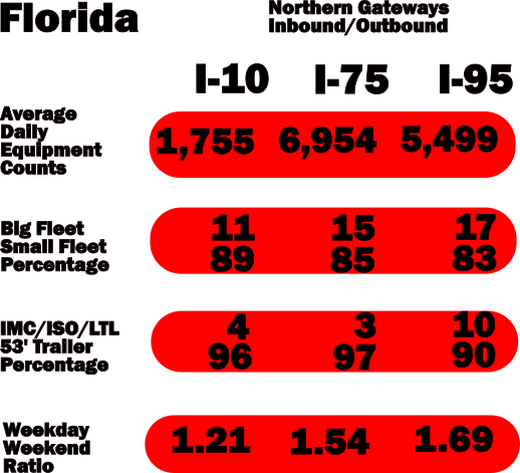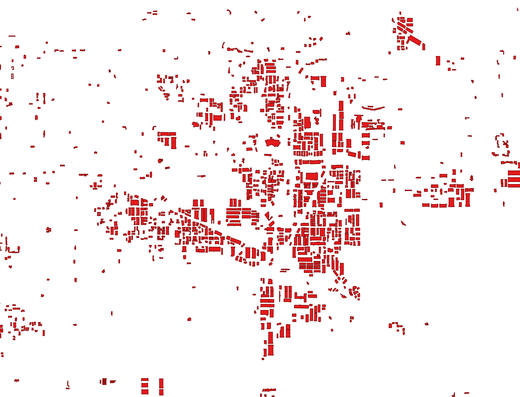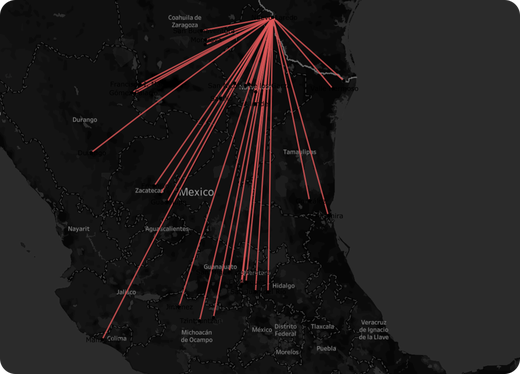
Truck Traffic Flow Throughout the United States
We collect truck flows across major freight lanes throughout the USA. We count and label the combination of tractor/trailers. For the freight lanes that we cover, you see:
- the mix of equipment types among dry vans, intermodal boxes, and ocean containers
- the breakdown of private fleets vs for hire fleets
- the mix of major for-hire/private fleets vs independent fleets
- mix of tractors by make/model
- check our blog for discussion on specific lanes.

Optimize Your Freight Network with Insights from Geospatial Data
With our geospatial datasets, you can evaluate how your existing freight network integrates with the broader North American freight ecosystem. Freight networks thrive on efficiency when distances, weights, and volumes are balanced. Our solutions let you:
- Access new measurements like dock door counts and yard space.
- Aggregate by US designations like county and zipcode. Or, customize your geographic paramters.
- Locate opportunities that are adjacent to your existing network.
- check our blog for how freight and geospatial data come together.

Mexico: Measure the Scale and Pace that Global Supply Chains Are Actually Shifting At
You know that how global supply chains operate in Mexico is changing. We believe that the best tool for measuring the magnitude and pace of this change is tracking how global supply chains stage inventory within Mexico. We track inventory moves within Mexico with two methods:
- A focused analysis of the Mexico Pedimentos detailing how importers and exporters use the IMMEX program
- Domestic freight bookings that show freight is routed from Mexican origins to border crossings
- If you truly have an interest in cross-border trade: check out our blog